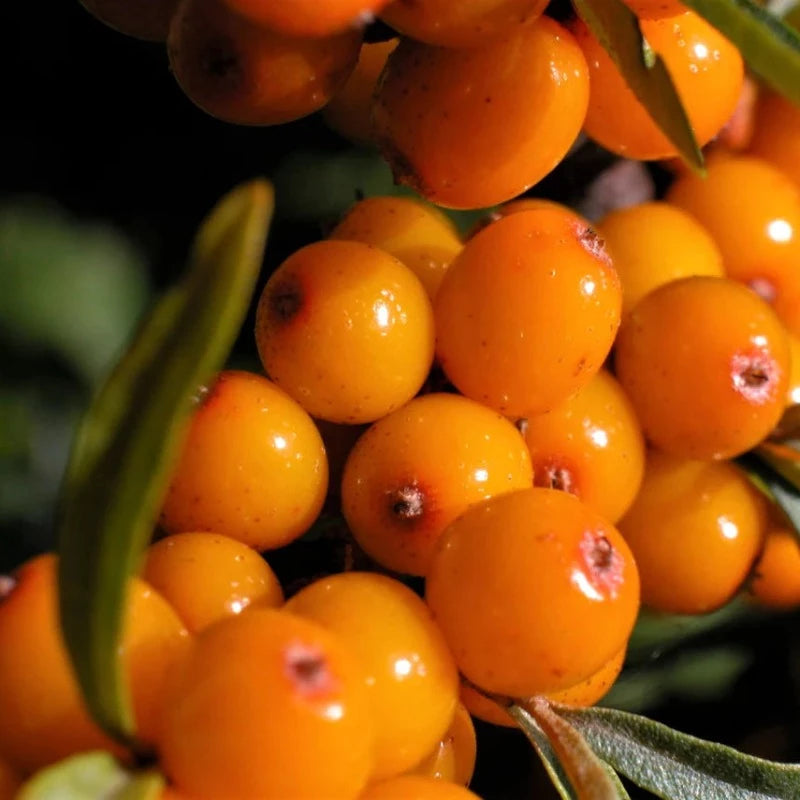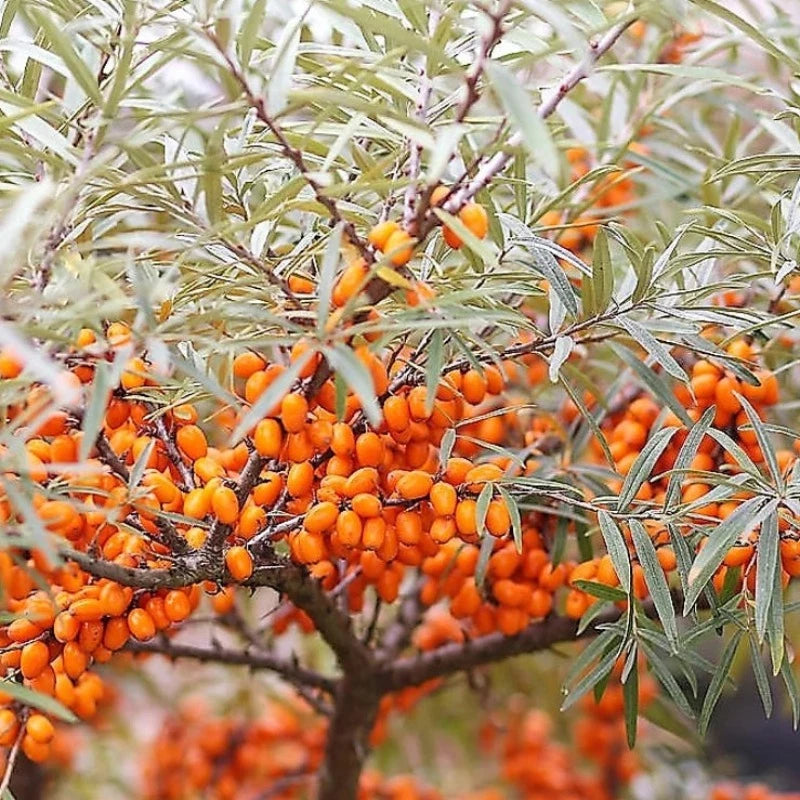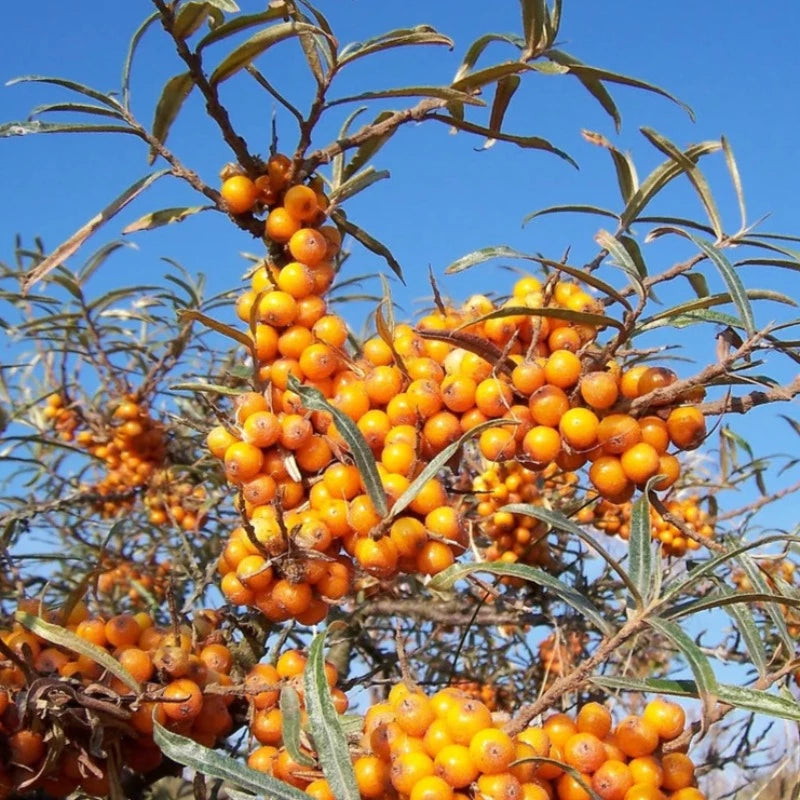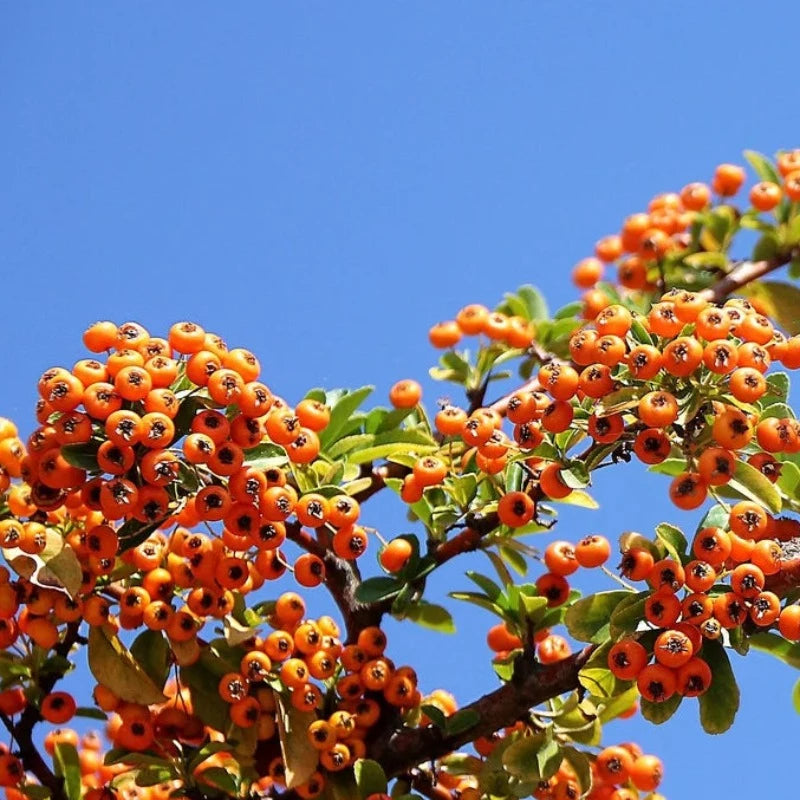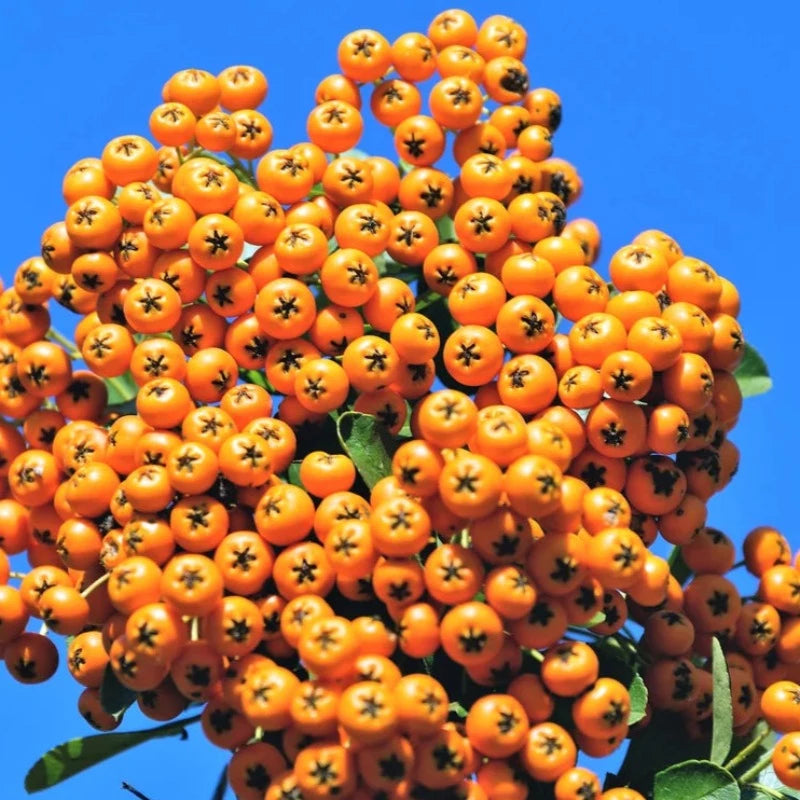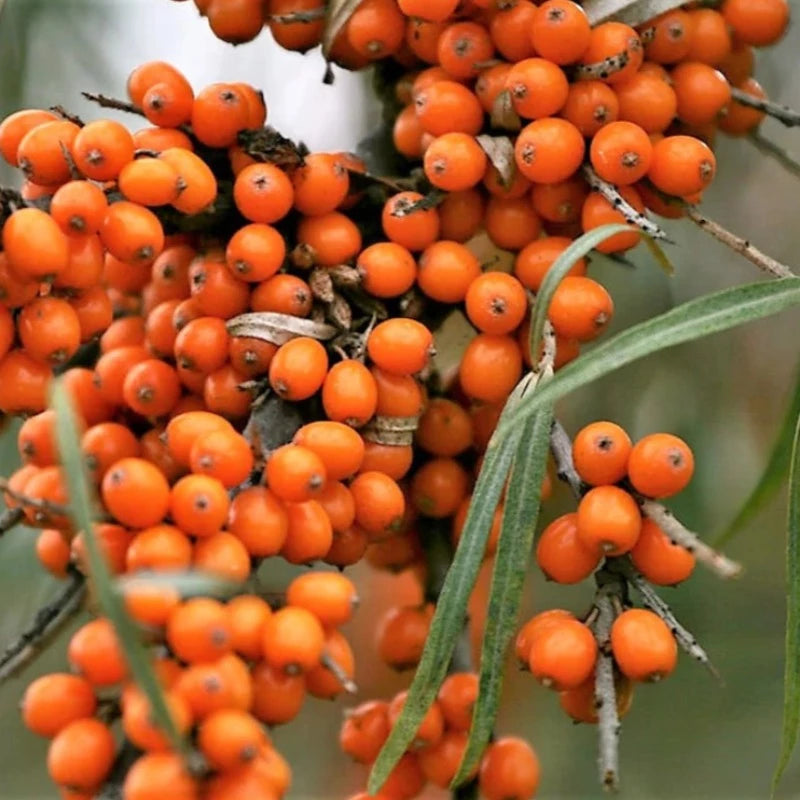- Historical context: Seaberry, also known as sea buckthorn, has been used for centuries in traditional medicine and as a food source.
- Geographical origination: Seaberry is native to Europe and Asia, particularly in the Himalayan region.
- Relevant cultural significance: In ancient Greece, seaberry was used to feed horses to improve their coat and health. It is also mentioned in Tibetan and Mongolian medicinal texts.
- Time period of discovery: Seaberry has been known and utilized for over a thousand years, with historical records dating back to ancient Greece and Tibet.
- Original habitat: Seaberry typically grows in sandy, well-drained soils along riverbanks, coastal areas, and mountainous regions.
- Notable historical uses: Historically, seaberry has been used for its medicinal properties, including treating skin conditions, digestive issues, and as a nutritional supplement.
- Ideal temperature range: Seaberry thrives in temperatures ranging from -40°C to 40°C (-40°F to 104°F), making it highly adaptable to various climates.
- Soil type: Prefers well-drained, sandy soils but can tolerate a range of soil types, including poor and saline soils.
- Sunlight requirements: Requires full sun for optimal growth and fruit production.
- Watering needs: Moderate watering is needed, especially during dry periods. Seaberry is drought-tolerant once established.
- Planting season: Best planted in early spring or late fall.
- Germination time: Seeds typically germinate within 4-6 weeks under optimal conditions.
- Growth cycle duration: Seaberry plants can start producing fruit within 3-4 years after planting.
- Common pests and diseases: Common pests include aphids and spider mites. Diseases such as root rot and leaf spot can occur, especially in poorly drained soils.
- Companion planting advice: Seaberry can be planted alongside nitrogen-fixing plants like clover to improve soil fertility. It also benefits from being planted near windbreaks to protect from strong winds.
- Common challenges and solutions: Challenges include managing pests and ensuring proper drainage. Solutions involve regular monitoring for pests, using organic pest control methods, and planting in well-drained soil.
- Nutritional values: Seaberry is rich in vitamins C, E, and A, as well as omega fatty acids, antioxidants, and flavonoids.
- Health benefits: Known for boosting the immune system, improving skin health, reducing inflammation, and supporting cardiovascular health.
- Culinary uses: Seaberry can be used to make juices, jams, sauces, and desserts. Its tart flavor adds a unique taste to various dishes.
- Medicinal uses: Traditionally used to treat skin conditions, digestive issues, and to promote overall health. Modern research supports its use in skincare products and supplements.
- Other unique advantages: Seaberry plants are used for soil erosion control and land reclamation due to their extensive root systems. They also improve soil fertility through nitrogen fixation.
